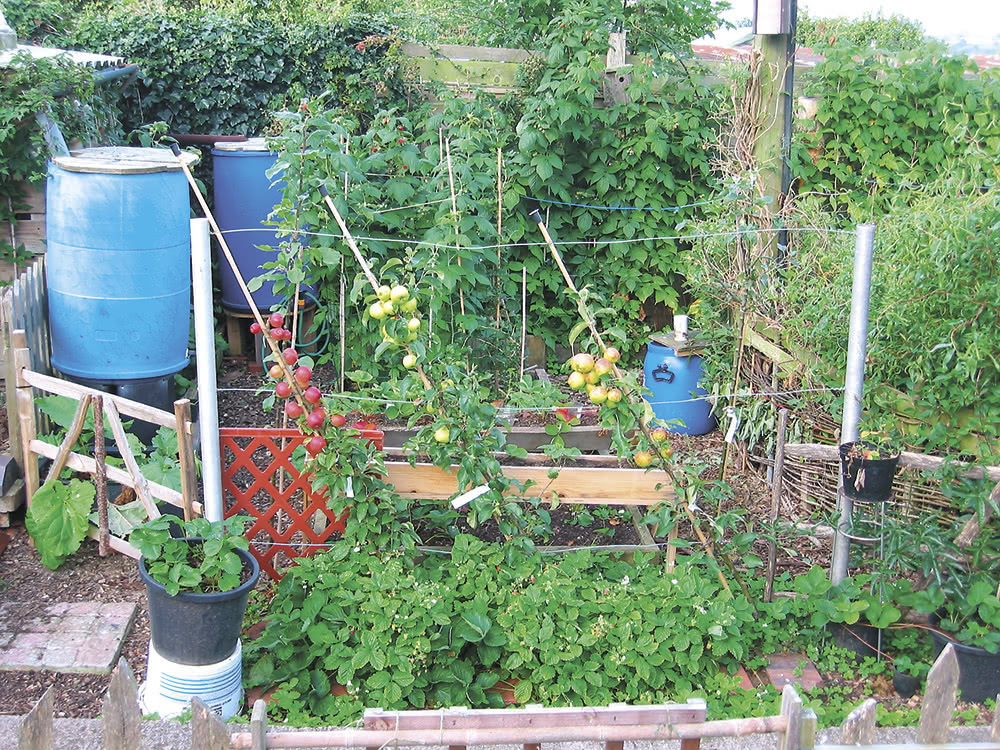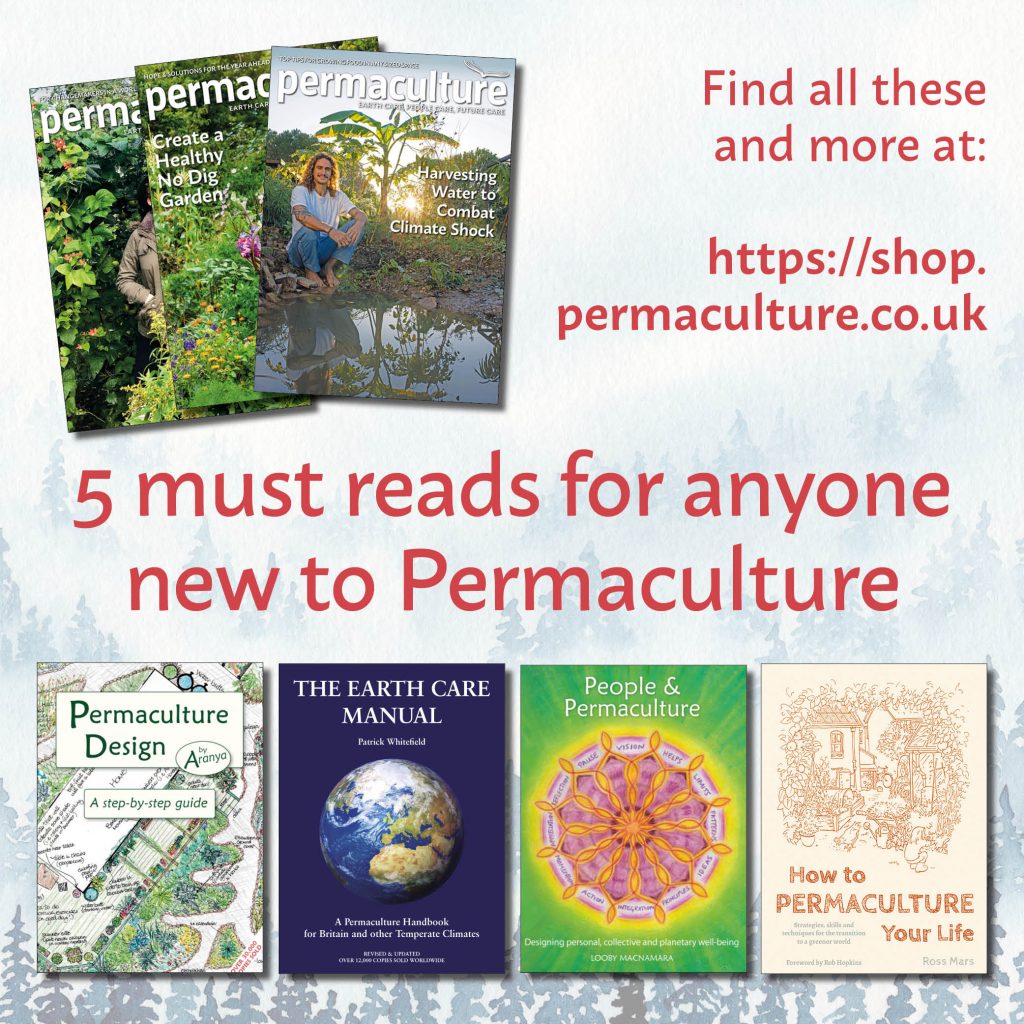
Wade Muggleton’s back garden has been designed using permaculture principles. He collects rainwater, uses vertical space for growing food to get the most out of his garden and incorporates a wide range of plants and varieties.
By thinking carefully about the way we use our resources – food, energy, shelter and other material and non-material needs – it is possible to get much more out of life by using less. We can be more productive for less effort while reaping benefits for our environment and ourselves, for now and for generations to come.
The design of an ecologically sound way of living is the essence of permaculture, within our households, gardens, communities and businesses. It is created by cooperating with nature and caring for the earth and its people.
Permaculture is not exclusive so its principles and practice can be used by anyone, anywhere:
Permaculture encourages us to be resourceful and self-reliant. It is not a dogma or a religion but an ecological design system which helps us find solutions to the many problems facing us, both locally and also globally.
“Permaculture, originally ‘Permanent Agriculture’, is often viewed as a set of gardening techniques, but it has in fact developed into a whole design philosophy, and for some people a philosophy for life. Its central theme is the creation of human systems which provide for human needs, but using many natural elements and drawing inspiration from natural ecosystems. Its goals and priorities coincide with what many people see as the core requirements for sustainability.”
Permaculture tackles how to grow food, build houses and create communities, and also minimise environmental impact. Its principles are being constantly developed and refined by people throughout the world in very different climates and cultural circumstances.

Here are five must-reads:
* Permaculture magazine
Every issue is packed with inspiring stories and how-to articles. All subscriptions come with FREE digital access to every single past issue PLUS a subscriber-only, reusable 25% discount code for all our permaculture books.
https://shop.permaculture.co.uk/permaculture-magazine.html
* Permaculture Design – The ultimate guide to designing with permaculture.
https://shop.permaculture.co.uk/permaculture-design-a-step-by-step-guide.html
* The Earth Care Manual – A thorough manual to temperate permaculture, from and home and garden to community and farming. A tome of knowledge to take your time over.
https://shop.permaculture.co.uk/the-earth-care-manual.html
* People and Permaculture – The first dedicated book on peoplecare that explores how to use permaculture to restore personal, social and planetary well-being.
https://shop.permaculture.co.uk/people-and-permaculture.html
* How to Permaculture Your life – Packed with information on permaculture design principles, soil building, nutrient-dense food growing, including top plant and tree selections for all climatic zones.
https://shop.permaculture.co.uk/products/how-to-permaculture-your-life